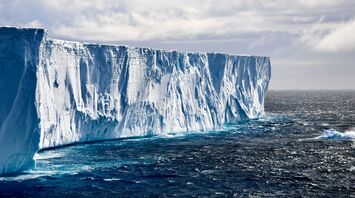Exploring the Fragile Beauty of Antarctica: A Water-Borne Adventure

Antarctica, the southernmost continent, offers an ethereal landscape where the silence is broken only by the crackling of ice and the calls of wildlife. This remote wilderness, composed of vast expanses of ice and snow, glaciers, and majestic icebergs, is accessible primarily through water-borne adventures that promise an intimate encounter with its stark beauty and thriving ecosystem.
Navigating the Ice-Laden Waters
Embarking on a journey to Antarctica is unlike any other travel experience. Tourists typically board ice-strengthened vessels designed to navigate through the continent’s challenging marine environment. These ships weave through a maze of icebergs, revealing scenes of profound isolation and untouched natural beauty. The bone-chilling waters around Antarctica are not just a barrier but a gateway to a surreal, frozen world.
Encountering Wildlife in the Ice
Despite the harsh conditions, Antarctica is teeming with life. The continent serves as a crucial breeding ground for various species of seals and penguins, while the surrounding Southern Ocean is rich with krill, a vital food source for whales. Visitors often witness humpback and minke whales breaching near their ships, and colonies of penguins congregating on the ice. These wildlife encounters provide profound insights into the resilience of life forms adapting to the extreme cold.
Understanding Antarctica's Fragility
Antarctica's environment is under threat from climate change, with rising temperatures leading to accelerated ice melt and altering marine ecosystems. This fragile ecological balance makes the continent a critical area for scientific research and environmental monitoring. Travelers to Antarctica are often struck by the visible effects of global warming, making the journey not only an adventure but also an educational experience that highlights the urgency of environmental conservation.
The Ethical Dimension of Travel
Tour operators in Antarctica are bound by strict regulations to ensure minimal human impact on the continent's delicate ecosystem. The principles of responsible travel are emphasized, with visitors encouraged to observe wildlife from a distance, adhere to designated paths, and avoid leaving any trace of their visit. This respect for the environment ensures that the pristine nature of Antarctica remains unspoiled for future generations.
In Conclusion
A trip to Antarctica is a profound reminder of our planet’s vulnerability and the need for concerted conservation efforts. For those fortunate enough to venture into this icy wilderness, the experience is transformative, embedding a deep appreciation for nature’s magnificence and its fragility. As Antarctica’s icy landscapes continue to change, the journey becomes even more significant, a call to preserve one of the world’s last great wildernesses.



















